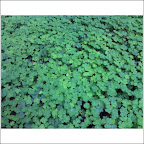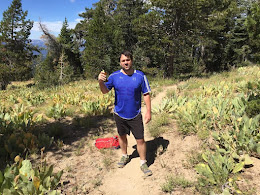(Note: the experts have spoken - the Sutter Buttes are not a Cascade. See
here for more. The rest of the article remains as originally posted.)
Geologists/geology buffs: your input on this discussion is most welcome.Several years ago I was on a Cascade-climbing kick, and part of my motivation was to collect a piece of basalt at the top of each one to try to show a relationship in lava composition between volcanoes. I was fascinated with the
Sutter Buttes, a tiny circular volcanic mountain range jutting up in the middle of the Central Valley, and I wanted to support my pet theory that they were in fact the southernmost Cascade: here we had a mini-stratovolcano due east of the Mendocino triple junction, and therefore a result of Juan de Fuca plate subduction. How could it
not be a Cascade?
To satisfy my curiosity I visited the privately-owned area with the
Middle Mountain Foundation I took a tour with geologist and Buttes expert
Brian Hausback, who explained two things: a) basalt composition is a function of the overlying crust; you don't necessarily see chemical similarity in basalts from stratovolcanoes in the same chain just because they're drawing from the same magma reservoir - so my sample collection wouldn't show anything; and b) the Buttes were way-off trend relative to the other Cascades (in terms of geography and age) and it turned out that my error was one of definition: not all volcanism associated with the JDF plate is a Cascade. I objected to the age argument because I put together a graph showing that the supposed relationship between northerliness and most recent eruption in the Cascades just didn't exist - what about Lassen and Thielsen? But I couldn't dispute the geography. What about Konocti at Clear Lake? What about all the flows that produce Oregon's black sand beaches? Eventually I relented, although now the USGS link about the Sutter Buttes that I provided above does say that the Sutter Buttes are in fact the southernmost Cascade.
So far so good? Not so fast. While the Cascades beginning with Shasta seem basically a textbook case of plate tectonics, as does California starting at the Bay and moving south, I saw a few things yesterday that confused the hell out of me. I saw a few igneous rocks here and there in Mendocino National Forest, but no other evidence of volcanism. Add to that what seemed to me obvious hummock formations on Route 32 between Newville and Black Butte Lake. Hummocks are small but steep hills occurring in sets around areas of volcanism, resulting from lava flows or debris accumulations - in violent eruptions they're actually pieces of the volcano that were thrown out by the explosion. The first time I saw them and knew what I was looking at was at Mt. St. Helens. Needless to say my phone battery was dead so I couldn't get any pictures of the ones near Black Butte Lake, but here's a great shot of some northwest of Mt. Shasta:

Of course, the Orland Buttes are just east of there, and no one is arguing that they're not volcanic. Here's a nice picture of one of the major ones next to Black Butte Lake in the winter, credit to shastacascade.com:

The Orland Buttes have clear bands of basalt which reveal their volcanic origin. There are also one or two formations like these just east of highway 29 in southern Napa county, likely a result of Mt. St. Helena when it was still active and
preserving redwoods in ash for us to look at 3 million years later, not to mention giving us a valley full of good soil for grapes.
Though I found no mention of the Newville hummocks, there are multiple papers explaining at least the Orland Buttes' origin as part of the
Lovejoy basalts, which originated 15-16 MYA near Susanville, which today sits in a gap between the northern end of the Sierras and Mt. Lassen, the first unambiguous Cascade stratovolcano. (Interestingly enough, Maidu people from around the Susanville area considered one of the mountains near Susanville to be the place from which the creator god made the world and under which he is now sleeping, but don't get too nervous, it's a Penutian-language-family creation myth motif - the Modoc thought the same thing about the petroglyph-ringed sandstone mountain in the southeast of Lava Beds National Park and the Nez Perce believed it about a boulder in central Idaho. The Nez Perce one especially isn't anything to write home about.)
The problem remains that Susanville is about 120 air miles from these hummocks near Newville. Even if the basalt all the way over by Orland can be explained by an eruption in Susanville - and some geologists, suspicious at the size of the flow and its age, similar to the Columbia basalts - haved posited a
Yellowstone-style eruption as the mechanism.
This would still have to be one hell of an eruption to put hummocks (if that's what they are) all the way over at Newville. My amateur vote is for volcanism somewhere nearby in the part of the Coast Range in Mendocino National Forest. Unlike in much of the rest of geology-textbook California, the picture is anything but clear (which makes it more interesting). The Trinity Alps to the north have been investigated in a series of papers attempting to describe the
complex plate motion that continues to build these mountains. While I can't see a reason to rule out an association with the Yellowstone mantle plume, for my money, I also see no reason to think the same plate motion operating in the Trinity Alps wouldn't apply 70 air miles south in the northern Coast Range.









